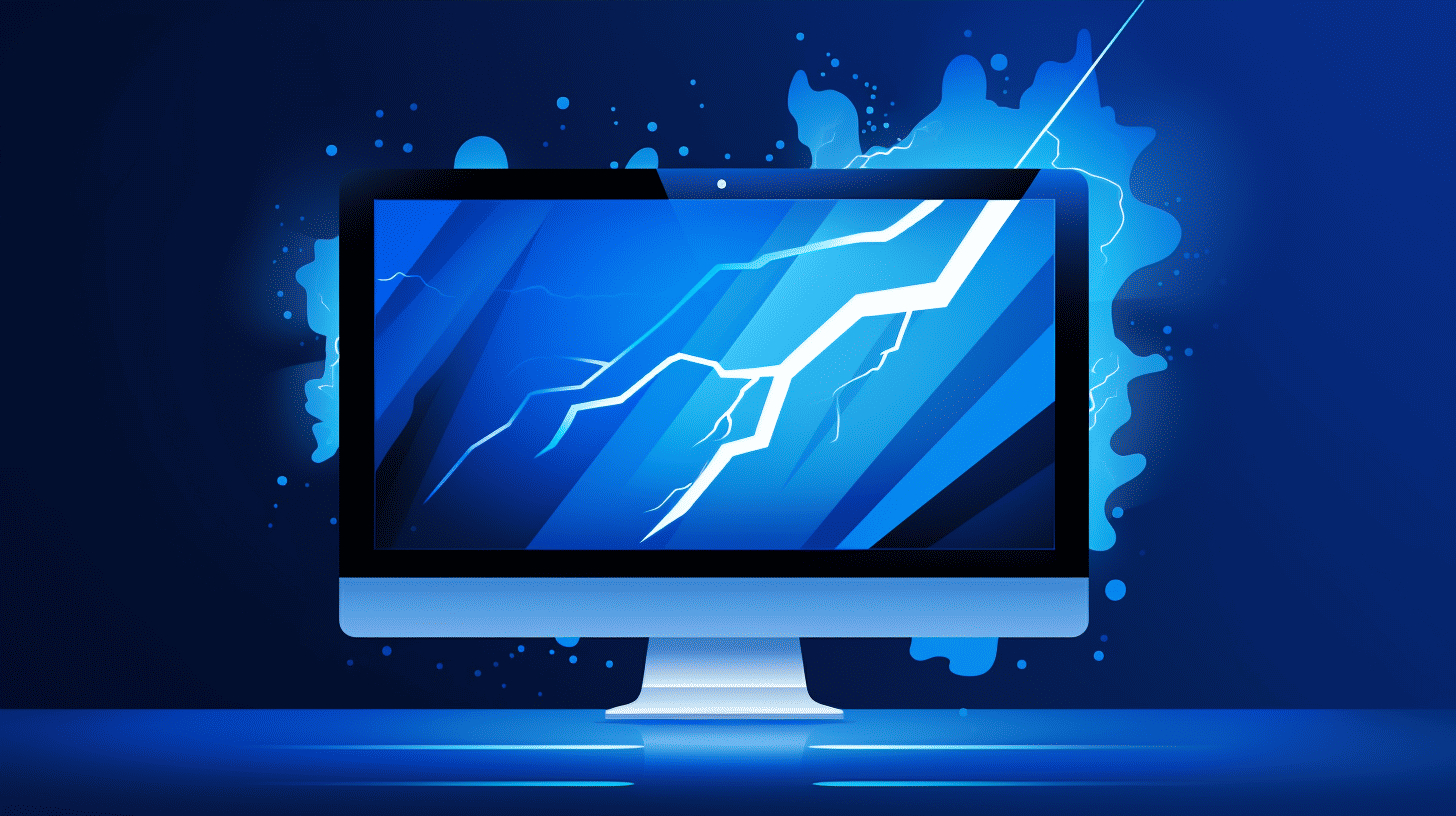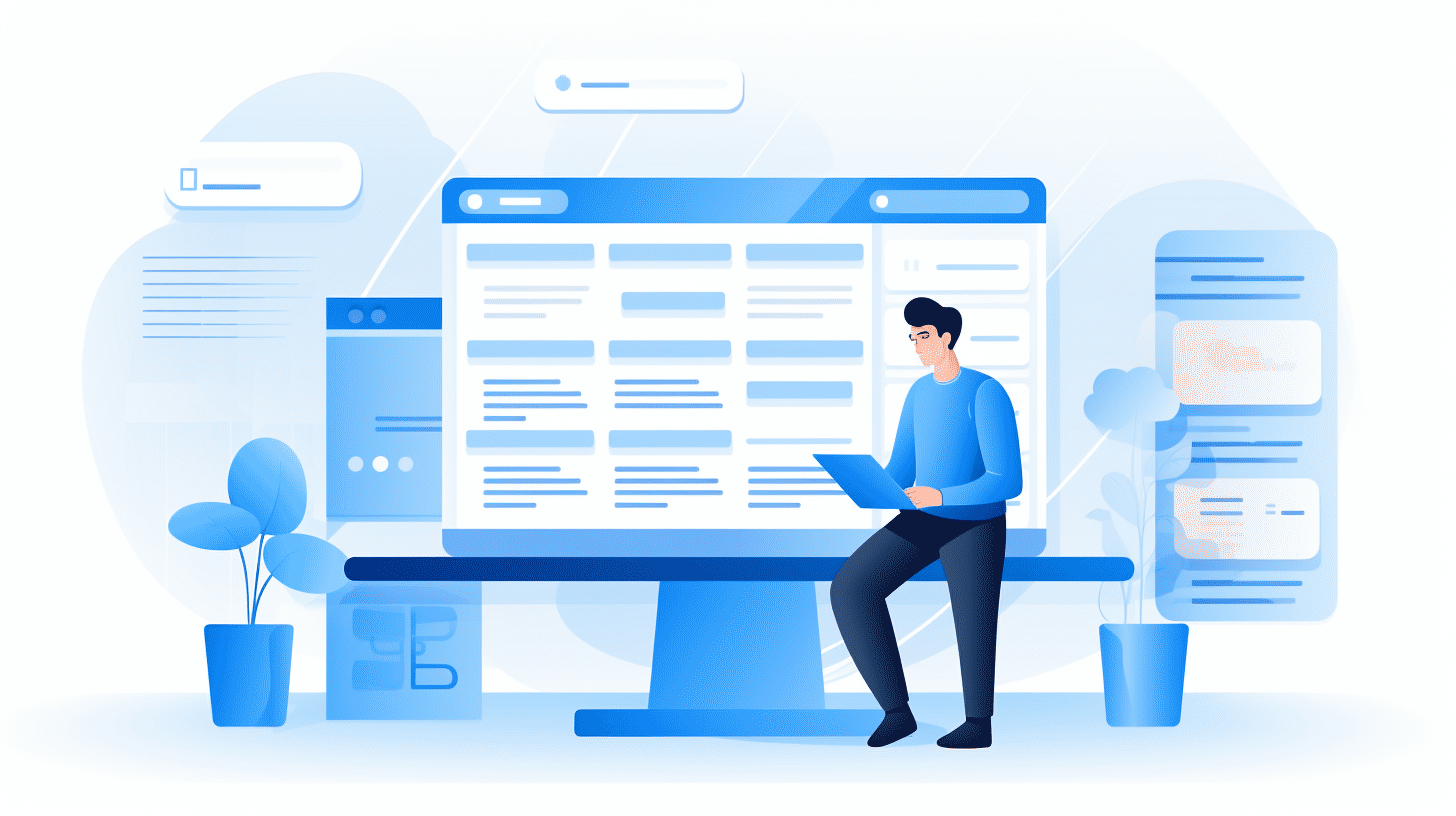在当今快节奏的数字世界中,速度就是一切。用户希望网站能够快速加载并提供无缝的浏览体验。对于 WordPress 网站,优化性能对于确保快速愉快的用户体验至关重要。加载缓慢的网站会让访问者感到沮丧并导致高跳出率,从而对您网站的搜索引擎排名产生负面影响。
幸运的是,您可以实施多种策略和技术来提高 WordPress 网站的加载速度。从利用缓存插件到优化图像和清理 WordPress 数据库,每个步骤在提高性能方面都发挥着重要作用。通过花时间优化您的网站,您可以为您的受众提供他们渴望的速度,并获得更高的参与度和更高的转化率。
在本文中,我们将探讨各种提高 WordPress 网站加载速度的方法。我们将介绍从利用缓存插件优化图像文件大小、更新 PHP 版本到清理 WordPress 数据库的所有内容。此外,我们还将深入探讨使用内容分发网络 (CDN)、选择高质量 WordPress 主题以及定期更新以提高性能的重要性。最后,我们将讨论最小化和插件优化、小部件优化、图像和资源的延迟加载、优化页面设计和内容,以及选择可靠的托管服务提供商和启用浏览器缓存的重要性。
通过实施这些策略,您将能够顺利优化 WordPress 网站,从而提高性能并获得无缝的用户体验。那么,让我们深入研究并揭开提高网站速度的秘诀。🚀
优化性能,提供快速的用户体验
对于网站而言,速度至关重要。加载缓慢的网站会让用户感到沮丧,并导致更高的跳出率。许多因素都会影响网站的速度,包括服务器性能、代码优化和内容交付。为了确保快速且响应迅速的用户体验,优化 WordPress 网站的性能至关重要。在本文中,我们将探讨一些有效的方法来增强 WordPress 网站的性能。
缓存插件可加快加载速度
提高 WordPress 网站速度的最有效方法之一是使用缓存插件。缓存插件有助于存储网站页面的静态版本,以便更快地向用户提供这些页面。该插件会生成 HTML 文件,可以直接发送给用户,而无需在每次加载页面时处理 PHP 脚本或执行数据库查询。
使用缓存插件可以显著影响您网站的加载速度。它可以减少服务器的工作负载、缩短响应时间并提升整体用户体验。通过利用缓存功能,您的网站可以处理更多流量,同时保持最佳性能。
提示:还没有吗?查看此内容 增强 WordPress 性能 文章中推荐了一些流行的缓存插件来帮助加快您的网站速度。
优化图像以减小文件大小
图片是任何网站不可或缺的一部分,但它们也可能是减慢加载速度的重要因素。优化图片可以对网站的性能产生巨大影响。以下是一些减少图片文件大小和缩短加载时间的技巧:
- 使用 JPEG Optimizer 或 TinyPNG 等工具压缩图片。这些工具有助于减小文件大小,同时不影响图片质量。
- 为图片使用合适的尺寸。避免上传大图片,然后在 HTML 代码中调整其大小。相反,在将图片上传到 WordPress 媒体库之前,请调整并优化图片大小。
- 为图片添加替代文本和标题。这不仅有助于提高可访问性,而且还为搜索引擎提供了有价值的信息。
通过实施这些图像优化技术,您可以显著提高网站速度并提供无缝的用户体验。
更新 PHP 版本
PHP 是支持 WordPress 网站的编程语言。保持 PHP 版本为最新版本对于保持最佳性能和安全性至关重要。每个 PHP 版本发布都会带来改进,从而提高网站速度和效率。
更新到最新的 PHP 版本可以显著提高您的 WordPress 网站的性能。它可以改善内存使用率、降低 CPU 消耗并加快脚本执行速度。此外,较新的 PHP 版本通常包含安全补丁,可保护您的网站免受潜在漏洞的侵害。
确保您的 WordPress 托管服务提供商支持最新的 PHP 版本,并定期更新您网站的 PHP 版本以利用性能优势。
清理WordPress数据库
随着时间的推移,您的 WordPress 数据库会积累不必要的数据,包括帖子修订、垃圾评论和已删除的项目。清理数据库有助于优化网站性能,减少数据库大小并缩短查询响应时间。
您可以使用 WP-Optimize 或 Advanced Database Cleaner 等插件轻松清理 WordPress 数据库。这些插件可以删除垃圾评论、优化数据库表并删除不必要的帖子修订。
通过定期清理 WordPress 数据库,您可以减轻服务器的负载、提高查询速度并维护一个精简的网站,以闪电般的速度向用户提供内容。
请记住,优化 WordPress 网站的性能是一个持续的过程。通过遵循这些提示并保持对网站维护的警惕,您可以为访问者提供快速、无缝的用户体验。
因此,让我们优化您的 WordPress 网站速度并确保您的访问者无需等待内容加载。
使用内容分发网络 (CDN)
在当今快节奏的数字世界中,网站访问者对网站加载时间的期望极高。加载缓慢的网站会让人沮丧,而且通常会导致高跳出率和失去商机。这就是内容分发网络 (CDN) 的作用所在。
CDN 是一个全球服务器网络,这些服务器战略性地放置在世界各地。当用户请求网页时,内容将从最靠近其位置的服务器传送,从而确保更快的加载时间。但使用 CDN 到底有什么好处呢?让我们深入了解一下:
更快的网站加载时间
使用 CDN 可加快网站访问者的加载时间,无论他们身在何处。通过从最近的服务器提供内容,CDN 缩短了数据传输距离,从而缩短了响应时间并带来了流畅的用户体验。这对于访问者分布在不同地理区域的网站或包含大型媒体文件(例如图像和视频)的网站尤其重要。
提高网站性能
CDN 不仅可以缩短加载时间,还可以提高网站的整体性能。通过将静态内容(例如图像、CSS 文件和 JavaScript 文件)的交付转移到 CDN 服务器,源服务器(您的网络托管服务器)可以专注于处理动态内容。这可以减轻服务器的压力,并使其更有效地处理请求。
可靠的内容分发
CDN 旨在处理大量流量并提供可扩展的基础设施。它们专门用于承受流量高峰并确保即使在高峰时段也能顺畅地交付内容。使用 CDN,您可以放心,无论访客数量有多少,您的网站都将保持可访问性并发挥最佳性能。
增强安全性
CDN 为您的网站提供了额外的安全保障。它们通常提供 DDoS 保护、Web 应用程序防火墙 (WAF)、SSL/TLS 加密和机器人缓解等功能。这些安全措施有助于保护您的网站免受恶意流量、未经授权的访问和其他安全威胁。
经济高效的解决方案
与普遍看法相反,使用 CDN 并不会花费太多。许多 CDN 提供价格合理的定价计划,可满足各种规模的企业的需求。此外,通过最大限度地降低带宽成本并减少昂贵的服务器升级需求,改进的性能和降低的服务器负载实际上可以为您节省长期成本。
通过利用 CDN 的强大功能,您可以显著提高网站的性能、改善用户体验并提升整体在线形象。如果您正在运营 WordPress 网站或 WooCommerce 商店,请考虑使用专为优化 WordPress 性能而设计的 CDN,例如 BunnyCDN。它提供闪电般快速、低成本的 CDN 服务,可将您的网站提升到一个新的水平。尝试一下,亲自体验它的好处!🚀
选择高质量的 WordPress 主题并定期更新
选择高质量的 WordPress 主题对于优化网站的性能和用户体验至关重要。有这么多主题可供选择,决定选择哪一个可能令人不知所措。但不要害怕!我们将指导您完成为您的 WordPress 网站寻找完美主题的过程。
高品质的 WordPress 主题不仅可以增强您网站的视觉吸引力,还可以确保其顺畅高效地运行。以下是选择主题时要考虑的一些关键因素:
- 响应性: 在当今以移动为先的世界,您的网站必须能够无缝适应不同的屏幕尺寸。选择完全响应的主题,这意味着它在桌面、平板电脑和智能手机上都能完美呈现。
- 设计和定制选项: 寻找符合您品牌审美并提供各种自定义选项的主题。这可让您创建一个独特且具有视觉吸引力的网站,脱颖而出。
- 速度和性能: 网站速度对于用户体验和搜索引擎优化至关重要。选择针对速度和性能进行了优化的主题,确保快速的页面加载时间和高效的代码。
- SEO友好: 确保主题适合 SEO 并遵循搜索引擎优化的最佳实践。这包括正确的 HTML 标记、架构标记和搜索引擎可以轻松抓取和索引的干净代码。
- 插件兼容性: WordPress 插件可扩展您网站的功能。请确保您选择的主题与流行插件兼容,例如用于电子商务的 WooCommerce 或用于搜索引擎优化的 Yoast SEO。
- 客户支持和文档: 检查主题开发人员是否提供可靠的客户支持和详细的文档。如果您遇到任何问题或需要主题设置和自定义方面的帮助,这一点很重要。
选择高质量的 WordPress 主题后,下一个关键步骤就是定期更新 WordPress 网站。定期更新对于维护网站的安全性、稳定性和性能至关重要。以下是更新 WordPress 网站如此重要的原因:
- 安全: 黑客一直在寻找过时的 WordPress 版本和插件中的漏洞。更新您的网站可确保您拥有最新的安全补丁并保护您免受潜在的安全漏洞的侵害。
- 错误修复: 更新通常包括修复问题并改善网站功能的错误。通过保持 WordPress 网站更新,您可以确保流畅且无错误的用户体验。
- 新功能: 更新可能会引入新功能和增强功能,从而增强您网站的功能和可用性。保持更新可让您利用这些改进,并为访问者提供更好的体验。
- 兼容性: 随着 WordPress 的发展,主题和插件需要与最新版本保持兼容。定期更新可确保您的网站与最新的 WordPress 版本和其他基本插件保持兼容。
请记住,选择高质量的 WordPress 主题并定期更新网站是维护快速、安全且用户友好的网站的重要步骤。因此,请花时间研究并选择适合您需求的主题,并将更新 WordPress 网站作为首要任务。祝您网站建设愉快!
专业提示: 正在寻找高品质的 WordPress 主题?查看 ManagedWP 的 高品质 WordPress 主题 类别,包含针对性能和可靠性进行了优化的主题选择。
最小化和插件优化
在 WordPress 的世界里,速度至关重要。用户需要快速加载的网站,而像 Google 这样的搜索引擎会奖励那些提供无缝用户体验的网站。提高 WordPress 网站性能的一种方法是通过最小化和插件优化的过程。通过最小化 HTML、CSS 和 JavaScript 文件的大小并减少使用的插件和主题数量,您可以显著加快网站速度并提高其整体性能。
压缩 HTML、CSS 和 JavaScript
当您访问网站时,浏览器必须下载并解释各种文件,例如 HTML、CSS 和 JavaScript。这些文件包含有关网站应如何显示和运行的说明。然而,这些文件通常包含不必要的数据,例如注释、空格和缩进,这些数据会增加文件的大小。
压缩是从 HTML、CSS 和 JavaScript 文件中删除这些不必要的元素的过程,从而减小它们的大小。文件大小的减少意味着您的网站将加载得更快,因为浏览器需要下载的数据更少。压缩可以手动完成,但这可能很耗时,而且容易出错。幸运的是,有各种插件可以为您自动完成这个过程。
一些用于在 WordPress 中压缩 HTML、CSS 和 JavaScript 的流行插件包括:
使用其中一个插件可以简化压缩过程,并可以显著提高您的网站的加载速度。
减少插件和主题的数量
插件和主题对于为 WordPress 网站添加功能和自定义功能至关重要。但是,使用过多会对性能产生负面影响。您安装的每个插件和主题都会为您的网站添加额外的代码和文件,从而增加其大小并可能降低其速度。
为了优化网站的性能,定期检查和评估已安装的插件和主题至关重要。问问自己是否每个插件和主题都是必需的,以及是否有其他替代方案可以提供类似的功能,而不会给网站带来不必要的负担。
以下是减少 WordPress 网站上插件和主题数量的一些技巧:
- 停用并删除所有未使用的插件和主题。即使它们没有被积极使用,它们仍可能占用宝贵的资源。
- 考虑将类似的功能整合到单个插件或主题中。执行类似任务的多个插件通常可以用一个更高效的插件替换。
- 定期检查插件和主题更新。过时或维护不善的插件和主题可能会对您网站的性能和安全性产生负面影响。
通过减少 WordPress 网站上的插件和主题的数量,您可以简化其代码库并提高其整体性能。
请记住,优化 WordPress 网站的速度和性能是一个持续的过程。定期检查和优化网站代码以及及时了解最新的最佳实践将确保您提供最佳的用户体验。
所以,继续吧,通过实施缩小和插件优化技术,让您的 WordPress 网站获得应有的提升。您的用户(和搜索引擎)会感谢您!
小部件优化和延迟加载
在当今快节奏的数字世界中,优化网站性能已成为吸引访客和确保无缝用户体验的关键。小部件优化和延迟加载是两种可以显著提高网站性能的有效技术。通过实施这些策略,网站所有者可以缩短页面加载时间,减少不必要的资源消耗,并为用户提供更愉快的浏览体验。
优化小部件
小部件可以成为网站的宝贵补充,提供额外的功能并增强用户参与度。但是,过多的小部件或优化不佳的小部件会降低网站的性能。为确保小部件不会影响网站的速度,请考虑以下优化措施:
- 尽量减少小部件:评估您网站上的小部件,并确定它们是否都是必需的。消除任何可能影响您网站速度的冗余或很少使用的小部件。通过减少小部件的数量,您可以显著提高加载时间和整体性能。
- 优化小部件代码:检查每个小部件的代码,确保其效率得到优化。臃肿或编写不当的代码会增加小部件加载和执行所需的时间。通过删除不必要的元素、减小文件大小和使用高效的编码实践来优化代码。这将有助于简化小部件的性能并提高网站的速度。
- 缓存小部件内容:利用缓存机制来存储小部件获取的内容。通过缓存经常访问的小部件内容,您可以减少服务器负载并缩短网站的响应时间。这可以通过利用缓存插件或实施服务器端缓存技术来实现。
- 定期监控小部件性能:密切关注每个小部件的长期表现。使用网站分析工具分析小部件对网站速度和用户体验的影响。如果某个小部件持续导致性能问题,请考虑寻找替代方案或优化其实施以最大限度地减少其影响。
通过实施这些小部件优化技术,网站所有者可以显著提高其网站的性能,确保流畅的用户体验和提高转化率。
图像和资源的延迟加载
页面加载速度慢的主要原因之一是网页上的所有图片和资源同时加载。延迟加载是一种有效的技术,可以推迟图片和资源的加载,直到真正需要它们为止。这可以大大提高您网站的性能。延迟加载的工作原理如下:
- 在图像可见时加载它们:延迟加载是指图片在进入用户视口时才加载,而不是在页面加载时立即加载所有图片。这种方法大大缩短了初始加载时间,使页面显示速度更快,并改善了整体浏览体验。
- 延迟加载资源:延迟加载还适用于其他资源,例如 JavaScript 文件、CSS 样式表和视频。这些资源不会预先加载,而是仅在必要时加载,例如当用户与特定元素交互或请求其他内容时。这有助于减少初始页面重量并加快整体加载过程。
- 实现延迟加载插件和库:要在您的网站上实现延迟加载,您可以利用各种可用的插件和库。这些工具可让您更轻松地将延迟加载功能集成到您的网站中,而无需大量的编码知识。
通过对图片和资源实施延迟加载,网站所有者可以显著提高网站的性能,尤其是对于包含多个媒体元素的页面。延迟加载不仅可以减少初始页面加载时间,还可以为不滚动查看页面上所有内容的用户节省带宽。
请记住,虽然小部件优化和延迟加载技术可以有效提高网站性能,但使用以下工具定期监控网站速度至关重要: Google PageSpeed Insights 并根据提供的建议做出必要的调整。
优化页面设计和内容
在当今快节奏的数字世界中,人们的注意力比以往任何时候都要短,网站加载时间在吸引访客方面起着至关重要的作用。用户希望网站能够快速加载,如果加载速度慢,他们很可能会离开并且永远不会再回来。优化页面设计和内容的最有效方法之一是提供更少的内容,从而减少加载时间。
在网页设计方面,少即是多。以下是优化页面设计和内容可以带来更好用户体验的几个关键原因:
- 更快的加载时间: 通过减少网页上的内容量,您可以显著提高其加载速度。这可以增强整体用户体验,并最大限度地降低访问者因加载时间过长而放弃您的网站的风险。🚀
- 提高可读性: 当你在页面上提供较少的内容时,用户更容易扫描和获取你想要传达的信息。通过使用清晰的标题、简洁的段落和项目符号,你可以让你的内容更易于理解和阅读。📖
- 增强的视觉吸引力: 杂乱且拥挤的网页会让用户在视觉上感到不知所措。通过简化设计并删除不必要的元素,您可以创建干净且视觉上吸引人的布局。这可以帮助吸引用户的注意力并让他们与您的内容保持互动。😍
- 更好的移动体验: 随着智能手机和平板电脑的使用日益增多,优化页面设计和内容变得更加重要。移动用户的屏幕空间通常有限,互联网连接速度也较慢。通过提供较少的内容,您可以确保您的网站适合移动设备,并在不同设备上快速加载。📱
- 改进的SEO性能: 搜索引擎算法将页面加载时间视为排名因素。通过优化页面设计和内容以加快加载速度,您可以提高网站在搜索引擎结果中的可见性。这最终可以为您的网站带来更多自然流量。🔍
请记住,在优化页面设计和内容时,务必不要牺牲所提供信息的质量和相关性。通过在简洁的内容和有价值的见解之间找到适当的平衡,您可以创建无缝的用户体验,让访问者不断回来获取更多信息。因此,请仔细查看您的网站,并开始精简多余的内容,以优化您的页面设计和内容!🎯
选择可靠的托管服务提供商并启用浏览器缓存
在优化网站性能方面,需要考虑的两个重要因素是选择可靠的托管服务提供商和启用浏览器缓存。这些步骤可以显著影响您网站的速度,而速度对于提供出色的用户体验至关重要。因此,让我们深入研究每个因素,并更详细地了解它们的重要性。
可靠的托管服务提供商
选择可靠的托管服务提供商是快速加载网站的基础。您选择的托管服务提供商将决定您网站的速度、正常运行时间和整体性能。以下是它的重要性:
- 服务器速度: 可靠的托管服务提供商将拥有具有高速连接的强大服务器,使您的网站能够快速高效地加载。
- 正常运行时间和停机时间: 可靠的托管服务提供商可确保您的网站最大程度地正常运行,最大限度地减少可能对用户体验产生负面影响的潜在停机时间。
- 客户支持: 如果出现任何技术问题或紧急情况,可靠的托管服务提供商将提供响应迅速且知识渊博的客户支持,及时为您提供帮助。
为了确保做出正确的选择,请花时间研究和比较不同的托管服务提供商。查看评论,考虑服务器位置,并评估他们提供的功能。其中一个脱颖而出的托管服务提供商是 托管 WP。他们优先考虑网站速度、安全性和客户支持,因此成为您的 WordPress 网站的绝佳选择。
启用浏览器缓存
优化网站速度的另一个重要步骤是启用浏览器缓存。此技术有助于减少访问者需要下载的数据量,因为他们的浏览器可以在本地存储某些文件。以下是启用浏览器缓存至关重要的原因:
- 减少服务器负载: 启用浏览器缓存后,回访者每次访问您的网站时无需重新下载静态文件(如图片、CSS 和 JavaScript)。这可减少服务器负载并缩短响应时间。
- 更快的页面加载时间: 由于许多资源都存储在本地,因此浏览器可以快速检索它们,从而为访问者提供更快的页面加载时间。
- 改善用户体验: 页面加载速度更快后,访问者更有可能停留在您的网站上并浏览它,从而改善用户体验并提高参与度。
启用浏览器缓存可能需要在您的网站上进行一些配置或使用缓存插件。请咨询您的网站开发人员或探索 W3 Total Cache 或 WP Super Cache 等插件,它们可以帮助简化流程。
总之,选择可靠的托管服务提供商并启用浏览器缓存是优化网站速度和整体性能的两个关键步骤。通过投资信誉良好的托管服务提供商并利用浏览器缓存技术,您可以为访问者提供快速无缝的浏览体验,最终提高用户满意度并改善网站指标。
总结
总之,优化 WordPress 性能对于提供快速、无缝的用户体验至关重要。通过实施本文讨论的策略,您可以显著提高 WordPress 网站的加载速度。以下是关键要点:
- 利用缓存插件: 通过存储网站页面的静态版本,实现缓存插件可以大大提高加载时间。
- 优化图片: 通过压缩和调整图像大小来减小文件大小,而不会影响质量。这有助于减少网站的整体加载时间。
- 更新PHP版本: 使您的 WordPress 网站保持最新的 PHP 版本,以获得改进的性能和安全功能。
- 清理 WordPress 数据库: 定期清理和优化数据库以删除不必要的数据并提高网站性能。
- 考虑一个内容分发网络(CDN): 利用 CDN 将您的网站内容分发到全球多个服务器上。这可以缩短网站访问者与服务器之间的距离,从而缩短加载时间。
- 选择高品质主题: 选择编码良好、轻量级且优先考虑性能的 WordPress 主题。此外,定期更新主题以确保与最新的 WordPress 版本兼容。
- 最小化文件并优化插件: 通过最小化 HTML、CSS 和 JavaScript 文件来减小其大小。此外,限制安装的插件和主题的数量,以最大限度地减少潜在的性能瓶颈。
- 优化小部件并启用延迟加载: 简化网站上小部件的使用,避免过度消耗资源。实现图像和资源的延迟加载,以缩短初始页面加载时间。
- 优化页面设计和内容: 通过优化页面布局、减少不必要的元素以及优化内容以加快加载速度来提高网站性能。
- 选择可靠的托管服务提供商: 选择 Managed-WP 等信誉良好的托管服务提供商,他们提供托管 WordPress 解决方案以及专家支持和可靠的基础设施。此外,启用浏览器缓存以在本地存储网站数据,减少回访者的加载时间。
请记住,提高 WordPress 网站的速度是一个持续的过程。定期监控性能指标、实施最佳实践并随时了解最新的优化技术,以确保您的网站始终提供快速且令人愉悦的用户体验。
现在,您对如何提高 WordPress 性能有了更深入的了解,是时候将这些策略付诸行动,充分发挥您网站的潜力了!如果您正在寻找一个可靠的托管 WordPress 托管平台,以简化基础设施并提供专家级的问题解决方案,您可以探索 Managed-WP™ 在这里,。使用 Managed-WP 简化您的 WordPress 体验并提升您网站的速度和性能!🚀
常见问题
- 为什么网站速度对 WordPress 性能很重要?
网站速度对于 WordPress 性能至关重要,因为它直接影响用户体验、搜索引擎排名和转化率。网站加载速度越快,跳出率就越低,用户参与度越高,SEO 就越好。
- 影响 WordPress 网站速度的一些常见因素有哪些?
影响 WordPress 网站速度的一些常见因素包括图像过大或未优化、插件过多、主题编码不佳、托管不足以及缺少缓存和内容传送网络 (CDN)。
- 如何提高我的 WordPress 网站的加载速度?
为了提高 WordPress 网站的加载速度,您可以:优化图像、缩小 CSS 和 JavaScript 文件、使用缓存插件、启用浏览器缓存、利用内容分发网络 (CDN)、选择可靠且快速的托管服务提供商以及限制使用的插件数量。
- 推荐使用哪些 WordPress 缓存插件?
一些流行的 WordPress 缓存插件包括:1. WP Rocket、2. W3 Total Cache、3. WP Super Cache 和 4. Comet Cache。这些插件通过缓存静态 HTML 文件并减少服务器负载来帮助提高网站性能。
- 使用内容分发网络 (CDN) 真的会对 WordPress 性能产生影响吗?
是的,使用内容分发网络 (CDN) 会极大地影响 WordPress 的性能。CDN 有助于从更靠近用户地理位置的服务器分发网站内容,从而减少延迟并缩短全球访问者的加载时间。



















